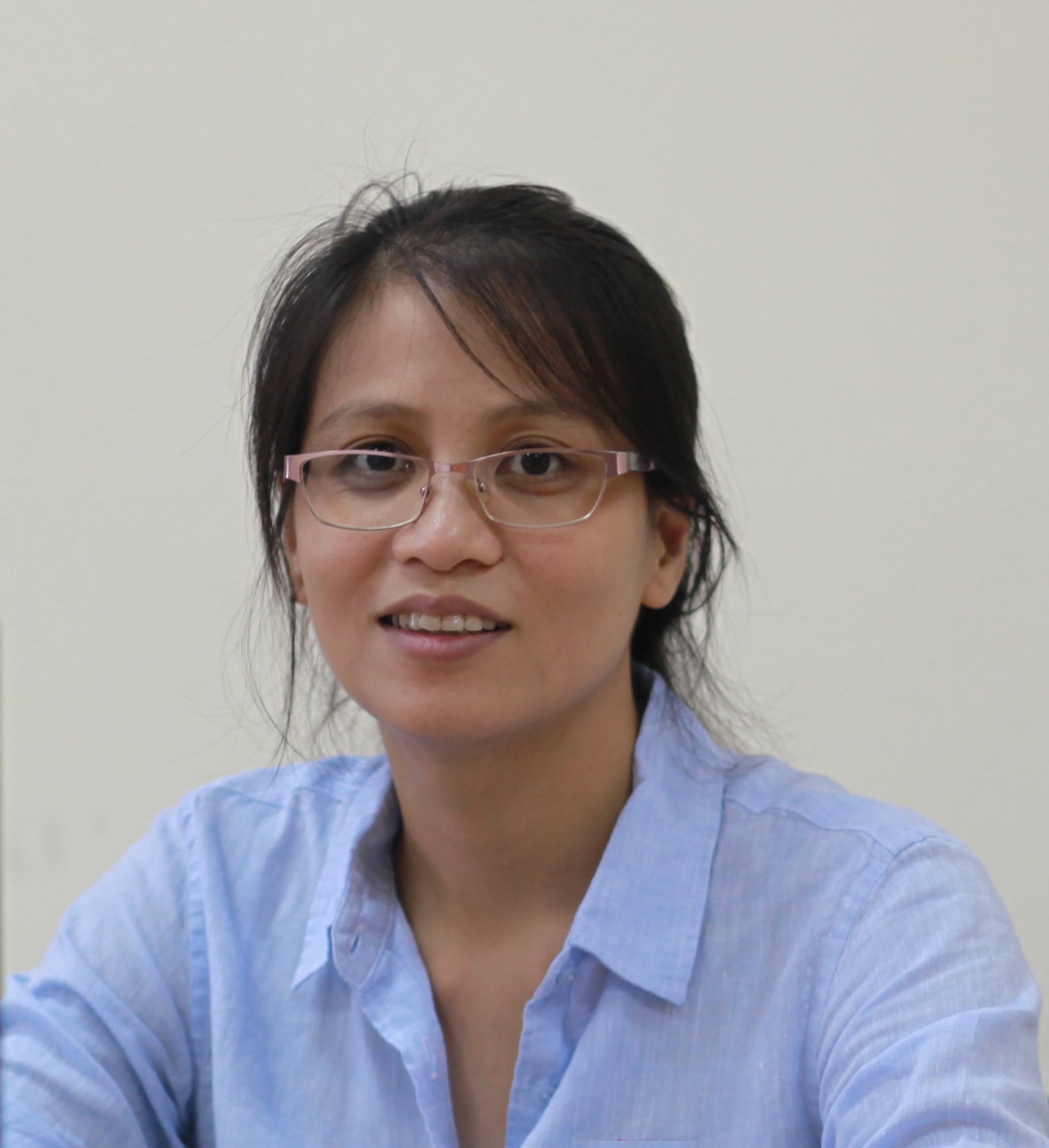Viet Nam Symposium on Scientific Computation and Modeling VSSCM-2

Amir Karton
University of New England, Australia
Editor of Chemical Physics Letters
Amir Karton
School of Science and Technology, University of New England, Armidale, NSW 2351, Australia.
E-mail: amir.karton@une.edu.au
Collaborations between computational chemists and experimentalists have become a cornerstone of scientific discovery, accelerating the development of nanomaterial technologies via feedback loops between theoretical predictions and experimental verifications. These powerful collaborations enable the rational design and optimization of functional nanomaterials with real-world applications. Here, we use high-level quantum chemical calculations to predict that pristine graphene can:
• reversibly planarize cyclooctatetraene, creating an antiaromatic/nonaromatic switch;[1]
• catalyze the tub-to-tub inversion in cyclooctatetraene derivatives;[2]
• catalyze the bowl-to-bowl inversion in geodesic aromatic compounds;[3] and
• catalyze the racemization of biphenyl and BINOL.[4]
Following these computational predictions, we show experimentally that single-layer graphene could efficiently catalyze the racemization of axially chiral BINOL.[5] We proceed to show that other 2D materials, such as graphene and hexagonal boron-nitride, can catalyze these processes.[3],[6]
References
1 A. A. Kroeger, A. Karton, J. Comput. Chem., 2022, 43, 96–105.
2 A. A. Kroeger, A. Karton. Chem. Eur. J., 2021, 27, 3420–3426.
3 A. Karton, J. Phys. Chem. A, 2020, 124, 6977–6985.
4 A. A. Kroeger, A. Karton, J. Org. Chem., 2019, 84, 11343–11347.
5 A. A. Kroeger, J. F. Hooper, A. Karton, PhysChemPhys, 2020, 21, 1675–1681. 6 A. Karton, Graphene catalysis made easy. Comprehensive Computational Chemistry, 1st Edition, Eds: R.J. Boyd and M. Yanez, vol. 2, pg. 580–593, 2023, Elsevier, ISBN 9780128232569

Quan Manh Phung
Nagoya University, Japan
Quan Manh Phung
Department of Chemistry, Graduate School of Science and Institute of Transformative Bio-Molecules (WPI-ITbM), Nagoya University, Furo-cho, Chikusa-ku, Nagoya, Aichi, 464-8602, Japan
Computational chemistry has emerged as an indispensable tool for explaining complex chemical phenomena and offering insights that complement experimental investigations. In this talk, we present four distinct case studies highlighting the versatility of computational methods in elucidating chemical processes in molecular systems, solid-state systems, and proteins.
- Molecular systems
Firstly, we employed conventional Density Functional Theory (DFT) calculations to investigate the reaction mechanisms of a novel biocatalytic process for preparing nanocarbon molecule derivatives. Spodoptera litura larvae, which are resistant to various organic compounds, were used as a biocatalyst. We showed that Cytochrome P450, a crucial enzyme involved in drug metabolism and bioactivation, is responsible for this biocatalytic process.
In the next example, we demonstrate the application of novel multireference methods to study the methane oxidation reaction catalyzed by copper zeolites. Through the accurate description of electron correlation effects, we challenge the validity of the hydrogen atom transfer reaction involving the so-called radical rebound mechanism, which was found in previous DFT calculations.
- Solid-state systems
In the third example, we utilized machine-learning-assisted periodic DFT calculations to explore the oxidation of methanol catalyzed by high-entropy alloys, which are potential electrocatalysts for fuel cells. By studying the reaction mechanisms on different Pt-alloyed surfaces, we discuss the underlying factors dictating the catalytic activity.
- Proteins
Lastly, we employ Molecular Dynamics (MD) simulations to study mutated variants of New Delhi metallo-beta-lactamase discovered in Vietnam, which are capable of hydrolyzing carbapenem antibiotics. By simulating the dynamics of the enzyme-substrate complex at atomic resolution, we elucidate the mutations responsible for antibiotic resistance.

Nguyen Thi Le Anh
Duy Tan University, Viet Nam
Nguyen Thi Le Anh
Duy Tan Computational Chemistry Lab (DTC2), Institute of Research and Development, Duy Tan University, Da Nang 550000, Viet Nam
Pesticides (insecticides, fungicides, herbicides, rodents, and plant growth regulators) available in ambient air, water, and soil environments, cause adverse effects on the ecosystem as well as on human health. Understanding the decomposition and oxidation of pesticides in environmental conditions, i.e. its mechanisms and kinetics, will provide essential information for further assessment of ecotoxicity risks and their influence on human health. Recently, the density functional theory (DFT) approach has been successfully applied to explore the mechanism and kinetics of different pesticide degradation reactions in environmental conditions. Moreover, docking and MD studies are valuable tools in clarifying the molecular interactions of the pesticide and its degradants with studied enzymes. Chlorpyrifos (CPF), is amongst lead organothiophosphate pesticides used in agricultural and domestic activities. Long-time contact and overexposure to CPF are the causes of acute and chronic toxicity in humans. Particularly, the toxicity of CPF is associated with asthma toxicity, leukemia, reproductive toxicity, DNA damage, and neural developmental toxicity. This talk will summarize the results obtained for HO●-induced oxidation of CPF, mostly on its mechanism, kinetics, ecotoxicity, and cholinesterase inhibition of degradants.
Corresponding author: nguyenthileanh@duytan.edu.vn

Nguyen Thi Ai Nhung
Hue University, Viet Nam
Nguyen Thi Ai Nhung
Department of Chemistry, University of Sciences, Hue University, Hue, Vietnam
E-mail: ntanhung@hueuni.edu.vn
ABSTRACT
In pharmaceutical development, conventional pre-clinical research, including drug searching and laboratory studies, often lasts many years in order to arrive at noticeable candidates of promising. The drawback pressures heavily on human efforts to tackle highly contagious and mutable diseases, thus leading to the harnessing of computer-based power. The fact is that the medical procedure is often expensive and prolonged; the commercial medicines might lead to serious side-effects. In addition, searching alternative active candidates from natural products as the reserve is of imperative need regarding the rise of antiviral and antibacterial resistances.
In this story, a variety of computational implementations can be utilisable: Quantum chemical calculations for structures and properties of investigated ligands; Molecular docking and molecular dynamics simulations for inhibitability; QSARIS for prediction of physicochemical properties; ADMET for regression of pharmacokinetics and pharmacology. On the other hand, the corresponding laboratory experiments are carried out to identify the chemical composition of medicinal plants and reveal the evidence of their potential as antibacterial, antiviral and disease suppression ability which can be: Spectroscopies for chemical determination; Bioassays for antibiotic activity. If a solid computation-experiment correlation established to certain degrees of reliability, the knowledge acquired could be considered as a significant contribution to the existing literature. Our attempts in this work are presented to look for the evidences of the theory-practice correlation, which were primarily focused on medicinal plant-based composition and protein-related structures.
Keywords: Computation-experiment correlation, quantum chemical analysis, molecular docking and molecular dynamics simulations, QSARIS, ADMET.

Dinh Quy Huong
Hue University of Education, Viet Nam
Empirical research serves as the primary avenue for uncovering and elucidating the properties of chemical substances. By meticulously designing experiments and analyzing outcomes, researchers unveil the structural intricacies as well as the physical and chemical attributes of substances. However, it’s imperative to acknowledge that the experimental journey often entails a significant investment of time, effort, and resources.
Computational chemistry harnesses software and advanced computational techniques to forecast and simulate the chemical characteristics of compounds and reaction mechanisms. Its scope encompasses the precise calculation of molecular structures, energetics, and properties, along with the anticipation of chemical reaction outcomes. Nonetheless, it’s essential to recognize that employing a uniform quantum chemical model across all research objectives is not feasible. Hence, the integration of experimental and theoretical methodologies becomes imperative to achieve comprehensive insights.
Computational chemistry plays a crucial role in investigating antioxidants, focusing on compounds such as thiourea derivatives and naphthalene derivatives. Experimental methodologies, including DPPH• and ABTS•+ methods, complement theoretical calculations that involve assessing thermodynamic parameters and investigating reaction mechanisms such as HAT, SET, and RAF. By leveraging computational techniques, the oxidation properties of compounds can be accurately predicted and evaluated, circumventing the need for intricate experiments. Computational methodologies enable the identification of molecular structures that effectively interact with detrimental free radicals, facilitating the prediction of oxidative activity and the optimization of high-performance antioxidant designs.
In the investigation of corrosion inhibitors, computational chemistry serves as a vital tool, focusing on compounds such as thiourea derivatives, nitrogen-containing heterocyclic compounds, and indole and benzofuran derivatives. Experimental approaches, including impedance spectroscopy, polarization curve measurement, and scanning electron microscope analysis, are complemented by theoretical chemical calculations. These calculations involve assessing quantization parameters such as HOMO and LUMO, as well as employing Monte Carlo simulation and molecular dynamics simulation techniques. Computational chemistry facilitates the prediction and comparative analysis of compounds’ efficacy in inhibiting metal corrosion processes. By forecasting the structure and interactions of inhibitor molecules at metal surfaces and proposing inhibition mechanisms, computational methods aid in the identification of promising inhibitor compounds.
Consequently, computational chemistry emerges as a pivotal adjunct in research endeavors, effectively streamlining experimental processes and conserving valuable time and resources within the realm of experimental chemistry. The combination of experimental inquiry with computational methodologies yields a robust and holistic approach, facilitating profound exploration and comprehension of the intricate chemical landscape that surrounds us.

Tu Le
RMIT University, Australia
Tu Le
School of Engineering, RMIT University, GPO Box 2476, Melbourne VIC 3001, Australia
E-mail: tu.le@rmit.edu.au
The design and synthesis of materials with useful, novel properties is one of the most active areas of contemporary science, generating a veritable explosion of scientific activity in areas such as biomaterials, cell and tissue engineering, organic photovoltaics and light-emitting materials, and nanomaterials for a myriad of medical and nonmedical applications. This new era of materials design and discovery covers many disciplines from chemistry and biology to physics and engineering. Conventionally, it takes at least 20 years to move a material from initial discovery to the marketplace. To accelerate the pace of novel materials discovery, computational methods such as artificial intelligent machine learning techniques can be used to construct predictive materials property models and allow rapid scanning of large chemical datasets to systematically identify attractive candidates for specific applications. This presentation will showcase recent studies on data-driven design of functional materials for a broad spectrum of applications such as drug delivery, antifouling and 3D printed materials.
Biography
Dr. Tu Le is a Senior Lecturer at the School of Engineering, RMIT University, Australia. Prior to joining RMIT, she was a research scientist at the Commonwealth Scientific and Industrial Research Organisation, Australia. Her research focuses on novel computational machine learning approaches to design and develop functional materials. As of February 2023, she has co-authored 52 peer reviewed articles and 3 book chapters. Her research outcomes have been published in high impact journals such as Advanced Science, Advanced Functional Materials, Chemical Reviews, Chemical Society Reviews, Small, and ACS Applied Materials and Interfaces. Her research impact and contributions have also been recognized through many awards and grants, such as the prestigious Vice Chancellor’s Fellowship at RMIT University, Jacques-Emile Dubois award, CASS Foundation travel grant, and the joint Japanese Society for the Promotion of Science – Australian Academy of Science grant for attending the HOPE meeting with Nobel Laureates.

Nghiem Thi Minh Hoa
Phenikaa University, Vietnam
H.T. M. Nghiem*
Phenikaa Institute for Advanced Study, Phenikaa University, Hanoi, Vietnam
*hoa.nghiemthiminh@phenikaa-uni.edu.vn
Scattering and absorption of light by nanoparticles take significant attention due to the potential of using nanoparticles for engineering the optical properties of host medium. However, many of the studies have been done in the regime where the host materials exhibit no absorption. In this study, we revisit the Mie theory of light scattering and absorption by a single particle to clarify the dependence of these optical properties on the volume of absorbing host-materials surrounding the particle. We also discuss the mean field theory presenting via the effective refractive index of the host medium for studying the case of multiple particles. The validity of these theories is confirmed through a comparison of theoretical results with experimental data [1]. Further details will be presented in the symposium.
[1] Pham Thi Hong, Hung Q. Nguyen, and H. T. M. Nghiem, in preparation.Dam Hieu Chi
Japan Advanced Institute for Science and Technology (JAIST), Japan